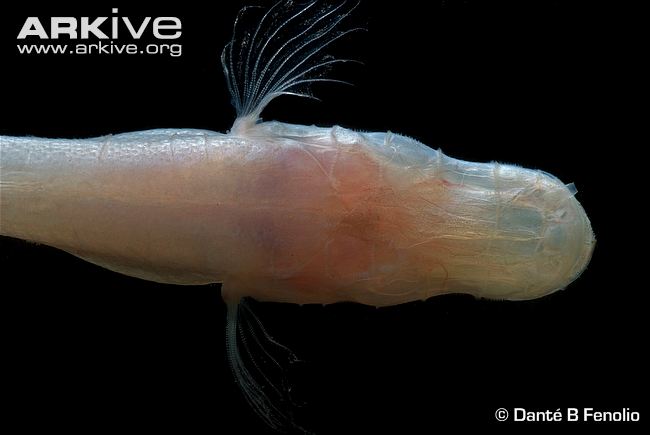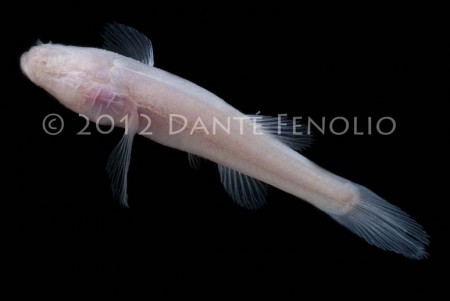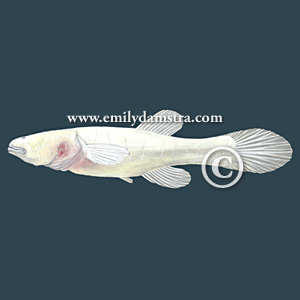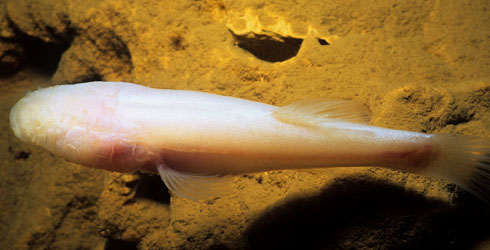
Amblyopsis spelaea
FAMILY
Amblyopsidae
TAXONOMY
Amblyopsis spelaeus DeKay, 1842, Mammoth Cave, Kentucky,
United States.
OTHER COMMON NAMES
German: Nцrdlicher Hцhlenfisch.
PHYSICAL CHARACTERISTICS
The species grows to 4.33 in (11.0 cm). They are pink-white in
coloration. The eyes are not externally visible because they
have only vestigial tissue under the skin. The pelvic fins are
rarely absent; when present, they are always very small. They
have a large, broad head.
DISTRIBUTION
Individuals of this species are found in about 100 caves in Kentucky
and southern Indiana. Based on field observations, Keith
suggested that the species
DISTRIBUTION
may be limited by competition
with the southern cavefish, Typhlichthys subterraneus.
HABITAT
Their typical habitats are caves and subterranean passages of
well-developed karst terrain. Can be found on consolidated
mud-rock substrates in shoals and silt-sand substrates in pools
but more often in caves with uniform silt-sand substrates.
BEHAVIOR
They respond to light by moving away (scotophilia).
FEEDING ECOLOGY AND DIET
They feed on benthic crustaceans and worms but can live for
two years without food because of their low metabolic rate.
They are considered a top predator.
REPRODUCTIVE BIOLOGY
These fish have external fertilization, and spawning takes place
during high water between February and April. They have a
low reproduction rate. The females brood eggs in the gill cav-
ity for about two to five months. The young appear in late
summer and early fall.
CONSERVATION STATUS
This species is classified as Vulnerable by the IUCN. It occupies
a highly restricted habitats and is susceptible to any disturbance
in the water, such as groundwater pollution, sedimentation,
runoff, impoundment, quarrying, and overcollecting.
SIGNIFICANCE TO HUMANS
Of particular scientific value as a cave species.
Photo Gallery of - Northern cavefish





 Animalia Life
Animalia Life